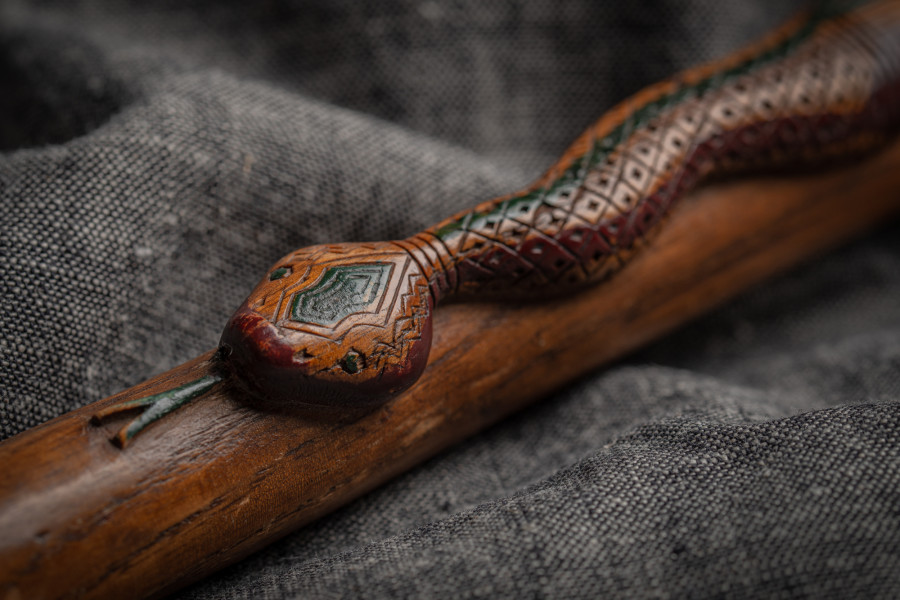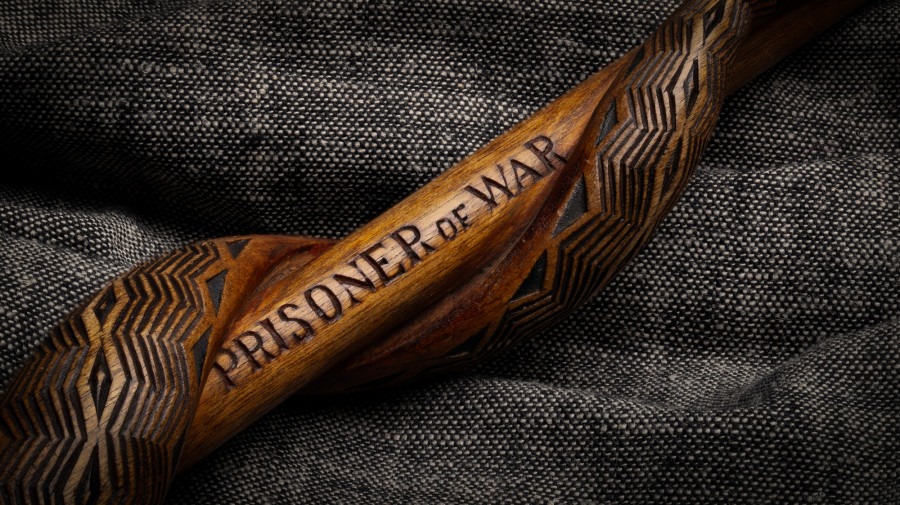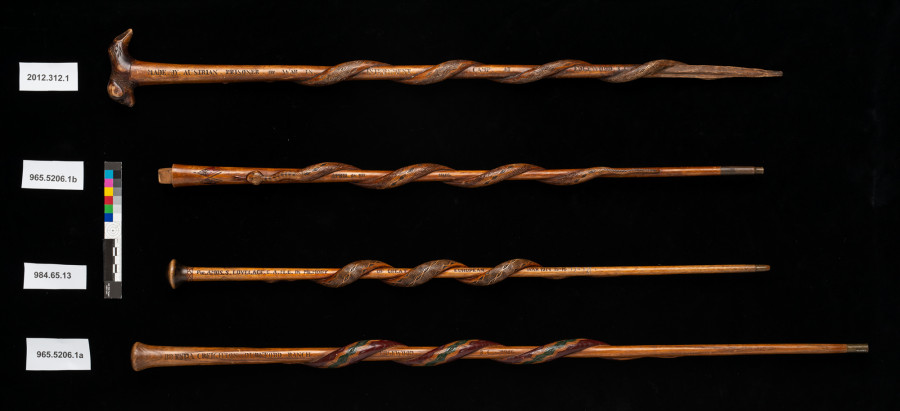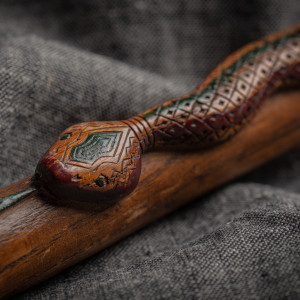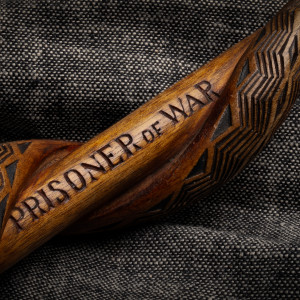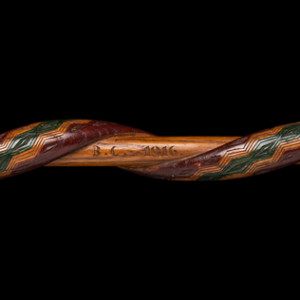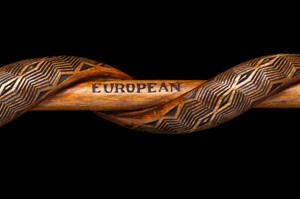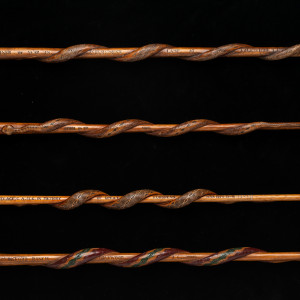BC’s Internment Camps
- Date:
- 1916
- Record:
- 984.65.13
- Materials:
- Carved and painted wood, with brass cartridge tip.
June 20 2020 marks the 100th anniversary of the closing of the first wave of internment camps in Canada and British Columbia.
The internment camps began with an Order in Council by the Government of Canada called the War Measures Act. It gave government sweeping emergency powers. Those deemed “enemy aliens” had to register and report monthly to the police. This applied to 80,000 immigrants to Canada: Germans; members of the Austro-Hungarian Empire: most were Ukrainian, but there were also Croatians, Czechs, Italians, Jews, Poles and Romanians, Serbians, Slovaks, Slovenes; Ottoman Empire Turks; and Bulgarians.
Failure to register, any act deemed suspicious, membership in an outlawed political party, or suspicion of any work for an “enemy state” resulted in arrest without trial and incarceration in one of 24 Canadian receiving stations and internment camps.
Arrested civilians included approximately 6,000 Ukrainians, 2,000 Germans, and several hundred Turks and Bulgarians. The camps included conscientious objectors, and members of banned political parties. A few women, with children, voluntarily joined their incarcerated husbands.
Camps were built quickly in isolated locations. Armed guards and barbed wire surrounded tar-paper wooden barracks. Those interned were formed into work parties to chop wood, fight forest fires, make roads and even built structures in our national parks. Smaller camps closed in 1916, but the larger camps stayed open until 1920. As the war went on prisoners of war from the European theatre of war joined them. 109 people died in the Canadian camps, including six shot while attempting to escape.
British Columbia had eight such camps: Edgewood (1915-1916), Morrissey (1915-1918); Mara Lake (1915-1917); Nanaimo (1914-1915); Revelstoke, Field, Otter (1915-1916) and Vernon (1914-1920).
These military swagger sticks from our collection were carved by an unknown Austrian Prisoner of War at the Edgewood Internment Camp, on the Lower Arrow Lakes. Commissioned by guards, medics, and local ranchers these unique works of art are a legacy of life in one of British Columbia’s first internment camps.
Documentation on life in the camps is sparse. The camps were dismantled, their records destroyed, the lumber was salvaged and the camps vanished.
But the idea of these camps has a long life. In the 1920s one was built to house Doukhobor protestors at Piercy Island, facing today’s Swartz Bay BC Ferry Terminal. In 1942 camps were built again, this time to house entire families of Japanese Canadian descent. One of those camps at New Denver was used in the 1950s to house the seized children of the Russian Sons of Freedom religious sect. Today the camp houses the Nikkei Internment Memorial Centre.
The Royal British Columbia Museum is also pleased to support Simon Fraser University graduate Dr. Sara Beaulieu’s field archaeology at Morrissey Internment Camp, near Fernie. Among her discovery were tins and spoons found in a collapsed escape tunnel.
To learn more, we recommend:
- https://www.thecanadianencyclopedia.ca/en/article/ukrainian-internment-in-canada
- https://www.vernonmorningstar.com/community/book-offers-glimpse-into-internment-camp/
- https://newdenver.ca/nikkei/
- https://www.thefreepress.ca/home/fernie-marks-100th-anniversary-of-internment-camp-closure/
- https://www.internmentcanada.ca/
- https://www.bac-lac.gc.ca/eng/discover/politics-government/Pages/thematic-guides-internment-camps.aspx#b6
965.5206.1a Military swagger stick: “Made by Austrian, Prisoner of War [for] Brenda Creighton, Durnford Ranch, Edgewood, B.C. 1916.
984.65.13. Military swagger stick made for a member of the Canadian Army Medical Corps at Edgewood. Look closely at the years. The camp closed in 1916 and another hand added 1917, 1918.
965.5206.1b Military swagger stick, “Brenda April 18 1916.” Brenda Creighton married Lieutenant John Naylor Edgewood camp commander. She died in Edgewood in October r 1918, shortly after her husband returned from overseas service.
2012.312.1 Military swagger stick with a dog and a duck handle.
